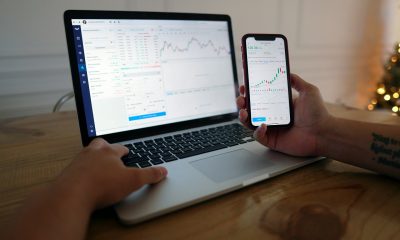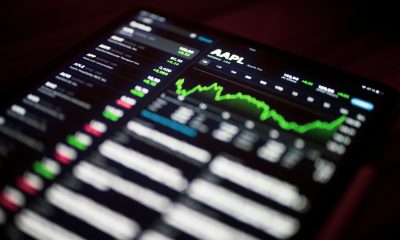Business
Gold Closed the Week at a New All-Time High As the Dow Jones Continues its Pattern of Weakness
This week, the Dow Jones failed again to reach new highs, closing 6.26% below its December peak. Despite geopolitical tensions boosting gold, the Dow continued its slump. Market enthusiasm remains absent, especially compared to the rising gold and silver miners (XAU), which show strength. The writer stays cautious, favoring undervalued precious metal stocks over equities.
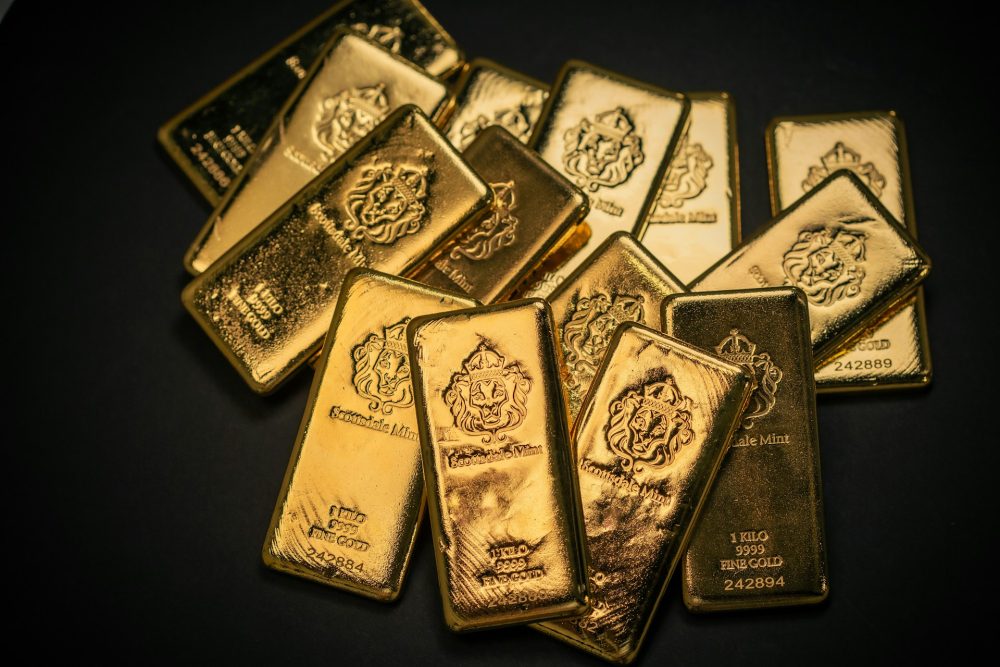
This week, the Dow Jones was once again offered an opportunity to display some market strength, and once again it failed to rise to the occasion. For three days, Tuesday to Thursday, the Dow Jones closed in scoring position (BEVs spanning -0.01% to -4.99%). Then on Friday’s close, it fell from the red-box seen below, closing the week with a BEV of -6.26%, or 6.26% from its last all-time high of last December 4th: 45,014.04.
I should note that it was on Thursday night when Israel began bombing Iran, an event that put a damper on most financial assets’ valuation, though the price of gold spiked on the news, closing the week at a new all-time high. So, should I place the blame for the Dow Jones’ latest display of market weakness on geopolitics?
Maybe, and then maybe not. It would be best for us to wait a few weeks to see what happens from now. Does the Dow Jones once again enter scoring position in its BEV chart below, then go on to new all-time highs? Or does it continue breaking down towards its BEV -10% line, and then towards its BEV -15% line?
In the past six months, time after time the Dow Jones has failed to display any enthusiasm for making market history with a new all-time high, when given an opportunity to do so. So understandably, I’m inclined to be bearish on the stock market. But should the Dow Jones grow a backbone, and once again make a new all-time high, I can change my mind quick enough.
However, keep in mind I’m out of this market, sitting in the markets’ peanut gallery, where bullish banter is only cheap talk. What is cheap talk? For example, me talking bullish nonsense about the Dow Jones, after a forty-three-year advance, that took the Dow Jones from below 800 in August 1982, to over 45,000 in December 2024. This is a market that offers very little in the way of possible rewards for buying, while offering risks to invested funds that are off the charts.
Up here in the peanut gallery, the only things we’d risk on this market is a few hotdogs, or maybe a beer or two. Good Golly Miss Molly, I wouldn’t actually buy anything that trades in the stock market at these grotesquely overvalued valuations. That is, except for the gold and silver miners, which are priced at very low, historical valuations.
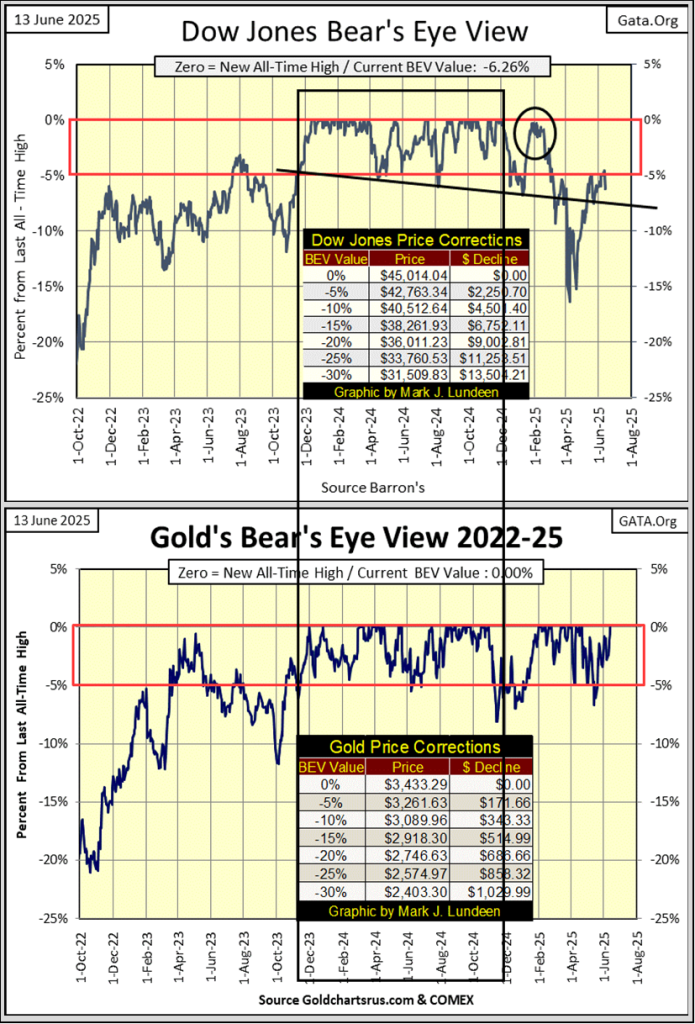
To better compare the Dow Jones with the price of gold, I stacked their BEV charts above. The Dow Jones is struggling in its BEV chart above, and has been since February, while gold this week made its sixty-sixth new all-time high since it entered scoring position in November 2023.
In the Dow Jones’ chart below, looking at its daily bars, for the third time since February, its BEV -5% line (42,700) repelled the bulls’ advance. This is really becoming a bad habit for the Dow Jones. But then there is always next week.

Next is my table for the Bear’s Eye View (BEV) values for the major market indexes I follow. What are BEV values? The dollar data these indexes are published in, are converted into percentage values, spanning only 100 possible percentage points; from 0.00% for a new all-time high, to -100% for a total wipeout in valuation.
In the Bear’s Eye View; new all-time highs register as 0.00%, and never more. All daily closes not at a new all-time high, are percentage claw-backs from their last all-time high. When attempting to make sense of many market indexes, whose published valuations have no actual connection with each other, looking at their daily BEV values provides an insight into the market that is remarkable, as seen below.
It’s been a month since the NYSE Financial Index (#2 in the table) closed at a new all-time high (BEV Zero = 0.00%). It’s been months since we’ve seen two or more of these indexes close with multiple BEV Zeros. Yet, week after week, the market sees plenty of these indexes close in scoring position (BEV values less than -5%), that for reasons I don’t understand, somehow never develop into BEV Zeros. It’s like in bootcamp, where they have everyone marching in place at double time, everyone is going nowhere fast.
But there is one troublemaker seen below, someone who isn’t listening to their Drill Instructor, and actually advancing when everyone else is marching in place. I’m talking about #17 below; the gold and silver miners in the XAU.
I’ve been talking about it for years, that a day would come where the XAU’s BEV value would be in single digits, and here it is in the chart & table below; with the XAU’s BEV value closing the week at -7.92%. This is something not seen since 2012, something we should take seriously.
Especially since the XAU is coming off an 83% bear-market bottom in January 2016. A greater than 80% market decline from an all-time high, is one heck of a HARD BOTTOM for a market, a bottom where everyone hates the asset they once loved.
Keep the following in mind about bull and bear markets;
- At market tops, the potential for gains are minimal, while the risks to invested funds are maximum, at a time when everyone wants in, and paying top prices for the privilege of owning shares,
- At market bottoms, the potential for gains are maximum, while the risks to invested funds are minimal, at a time when everyone wants to sell, and only a few want to buy at greatly discounted prices.
It’s from such hard bottoms, in this case where gold and silver mining companies were trading for $0.20 on the dollar in January 2016, for the same companies the market was willing to pay the full $1.00 for, five years earlier in April 2011, that a great bull market will spring from. In time, I’m sure the gold mining sector will become a historic bull market.
There is power in this move seen below. What can I say? I really like the gold and silver miners, if little else in this market.

In the table below listing my market indexes’ BEV values, the week closed with no BEV Zeros, with ten indexes closing in scoring position. The Dow Jones below (#12), shows its daily BEV values for this week. At Friday’s close, it failed to remain in scoring position.
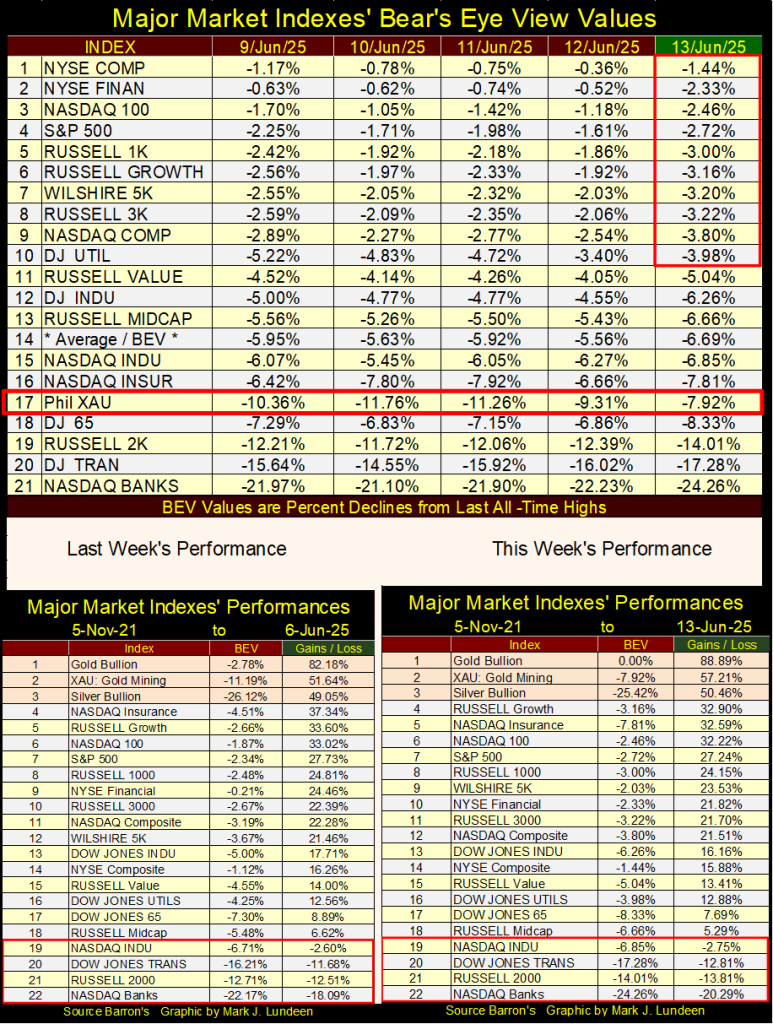
In this week’s performance table above, as usual gold, the XAU and silver closed the week at #1-3, and continue adding distance between them, and everything else below them. The NASDAQ Banking index is at #22, and down 20.29% from where it was in early November 2021. That is a bad omen for the future of this market.
Gold in its Red Indexed plot, chart below, continues surging ahead, as silver (Blue Plot) continues struggling with its indexed 20 line. I’m looking at gold’s plot below, and I’m wondering when is gold going to see a price correction? It has been going vertical since February 2024, with no significant pullbacks in price for sixteen months now. That is NOT normal market behavior.
So, what is happening? I’m just a market enthusiast, no “market expert” am I. But this isn’t my first rodeo, so I know something big is happening, outside the public’s view in the gold and silver bullion markets. Something like the big guys in the gold market (central banks and their minions), who were formerly short gold and silver, have been shifting their former bearish positions to bullish ones. It takes time for these big players in the bullion markets to shift from one position to the other, as we are seeing in the chart below.
Silver is behaving very oddly, as if rising silver prices is the unstoppable force, while its indexed 20 line, is the immovable object. What happens when they meet, when silver’s indexed value rises to 20 ($37.00), or more? I don’t know.
But I can’t wait to see what does happen when silver in the chart below, finally sees an indexed value of 21 ($38.86) or more! As silver closed this week at $36.32, $37.00 silver isn’t far away, maybe next week. Could the price of silver spike upwards, as gold’s has for the past year? I’m thinking it will, as in terms of gold, silver has never been this cheap since 1969.

Another way of looking at the data above, is to see how many ounces of silver, one ounce of gold can purchase (Silver to Gold Ratio, or SGR), in the chart below. This week closed with a SGR of 94.53 ounces of silver, to one ounce of gold. While a SGR of something over 90 isn’t historic, it is historically high, when compared to SGR values going back to 1969.
During the 1969 to 1980 gold bull market, the SGR never increased to something over 50. At the peak of this precious-metals bull market in late December 1979, the SGR declined to 15.47 ounces of silver, for one ounce of gold. So what?
Well, I’m thinking as with the 1969 to 1980 precious metals bull market, our current bull market in gold and silver, will also see a SGR falling inline to what the market saw fifty years ago. Far below where it is now.
If so, silver will outperform gold by many multiples. So, if you’re thinking of buying some gold sometime soon, maybe you should consider buying some silver too, as in terms of gold, silver is really cheap. And cheap is good, when one is buying.

What is that in gold’s step sum table below? Do I see a BEV Zero, highlighted in blue and gold? Why yes I do, gold’s sixty-sixth BEV Zero (0.00% = new all-time high) since gold entered scoring position in November 2023.
I also note gold’s 15-count closed the week at a neural +1. So, gold is far from being an overbought market, indicating gold’s current advance into market history has plenty of head-room for it to advance to much higher prices. But will it? I’m thinking it will, because I can’t think of any reasons why it wouldn’t.

On the Dow Jones’ side of the step sum table above; the Dow Jones continues to see as many advancing days as does gold. They both closed the week with a 15-count of +1, a very neutral 15-count. But where gold closed the week with a new all-time high, the Dow Jones closed the week outside of scoring position. What is the problem with the Dow Jones?
Let’s look at these two markets’ daily volatility’s 200D M/A; they have both gone up in the past year. But rising daily volatility means something different for these two markets.
For gold, rising volatility is something that happens during both bull and bear markets. As the price of gold falls during a bear market in gold, its daily volatility rises, exactly as what happens during a bull market in gold, as the price of gold rises. So, seeing gold’s daily volatility’s 200D M/A increase to 0.84%, as this week gold saw a new all-time high, is something to be expected, and welcomed.
But for the Dow Jones, rising daily volatility is ALWAYS BEARISH, and it has been that way since Charles Dow first created his Dow Jones Average in February 1885.
Look at the chart below, plotting daily volatility for the Dow Jones since 1960, big bear market bottoms occur, when the Dow Jones daily volatility’s 200D M/A peaks, as seen in the five major market declines since 1960 below.
To make the big money in the stock market, buy at a bear-market bottom, buy when daily volatility peaks somewhere above 1.25%, and hold on until daily volatility once again declines to 0.50%, which for the Dow Jones, happened in July 2024, a year ago (Red Circle).

Since last July, daily volatility for the Dow Jones has once again begun to rise, and now it is something above 0.70%. This rise in daily volatility hasn’t been a positive development for the stock market in the past year. So, what happens now?
Anything can happen in the market. As seen above, there have been times when daily volatility has peaked at 0.75%, or even 1.00%, to then come back down to the 0.50% line in the chart above, most likely to the profit of a bull who bought stocks during a time when daily volatility was rising. But with the gold and silver miners doing so well, why take a chance on the Dow Jones, my proxy for the broad stock market?
__
(Featured image by Scottsdale Mint via Unsplash)
DISCLAIMER: This article was written by a third party contributor and does not reflect the opinion of Born2Invest, its management, staff or its associates. Please review our disclaimer for more information.
This article may include forward-looking statements. These forward-looking statements generally are identified by the words “believe,” “project,” “estimate,” “become,” “plan,” “will,” and similar expressions, including with regards to potential earnings in the Empire Flippers affiliate program. These forward-looking statements involve known and unknown risks as well as uncertainties, including those discussed in the following cautionary statements and elsewhere in this article and on this site. Although the Company may believe that its expectations are based on reasonable assumptions, the actual results that the Company may achieve may differ materially from any forward-looking statements, which reflect the opinions of the management of the Company only as of the date hereof. Additionally, please make sure to read these important disclosures.

-

 Cannabis1 week ago
Cannabis1 week agoSwitzerland Poised to Surpass Germany with Smarter, Science-Based Cannabis Reform
-
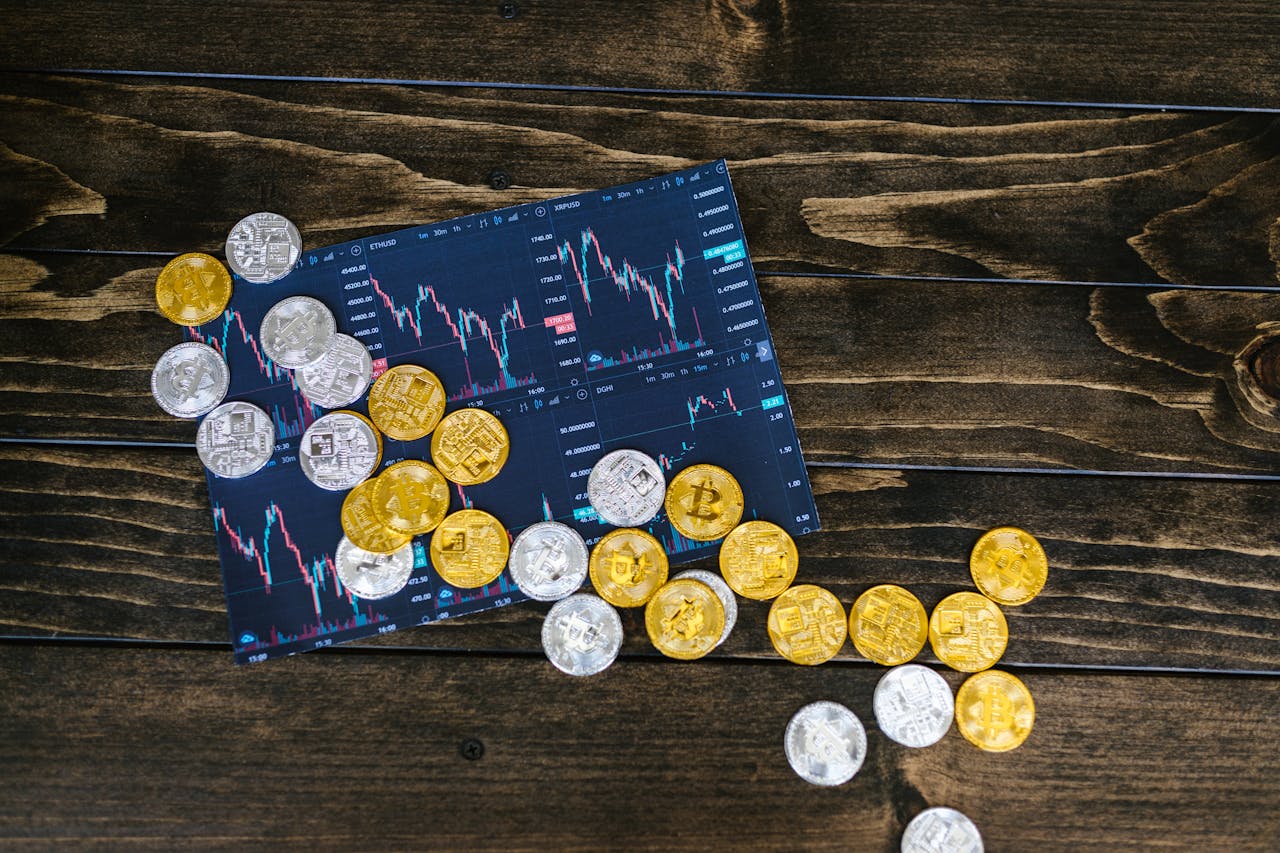
 Fintech6 days ago
Fintech6 days agoKraken Acquires Backed Finance to Boost RWA Strategy Ahead of 2026 IPO
-

 Biotech2 weeks ago
Biotech2 weeks agoImmunoPET Emerges as a Promising Virtual Biopsy for Personalizing Glioblastoma Treatment
-

 Business1 day ago
Business1 day agoMarkets Now Appear Steady, but Cracks Are Forming Beneath

